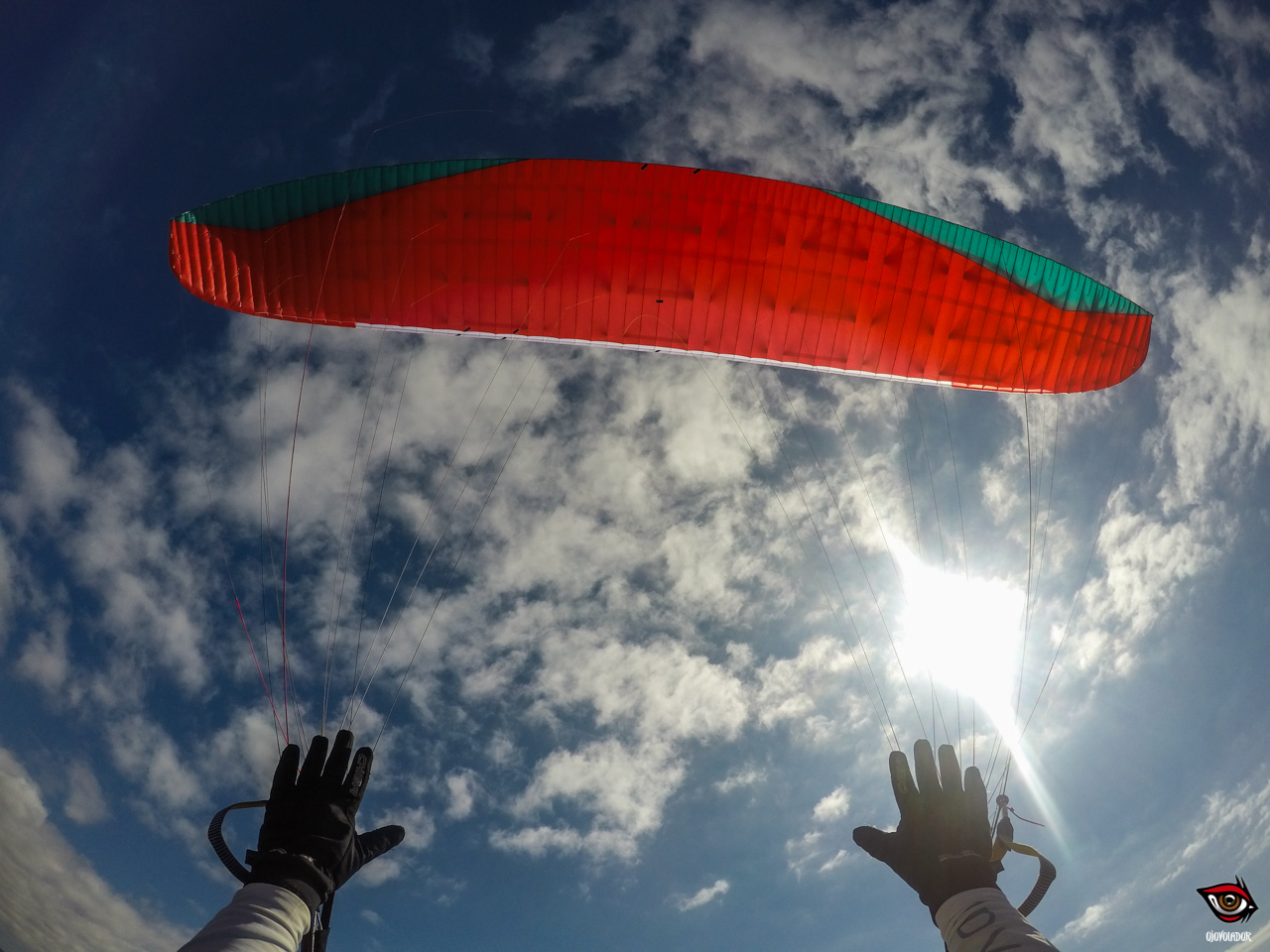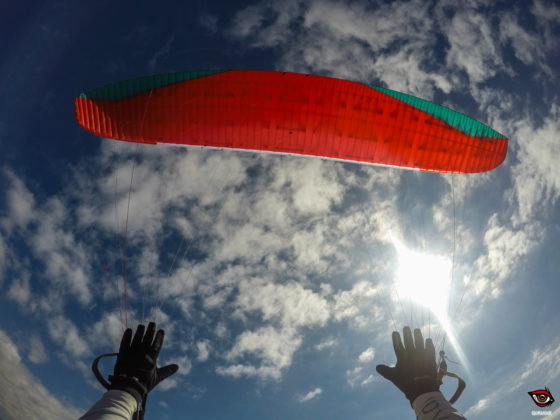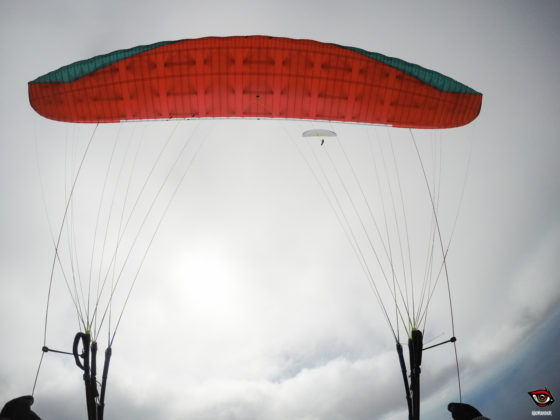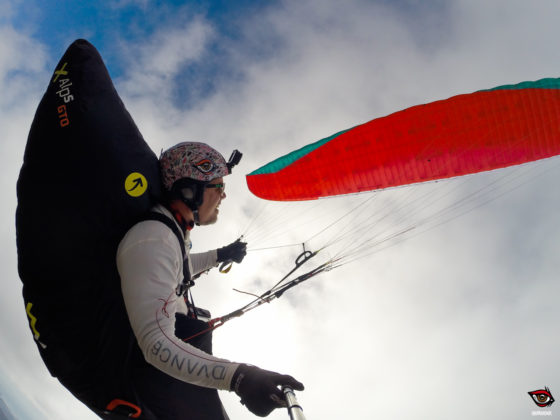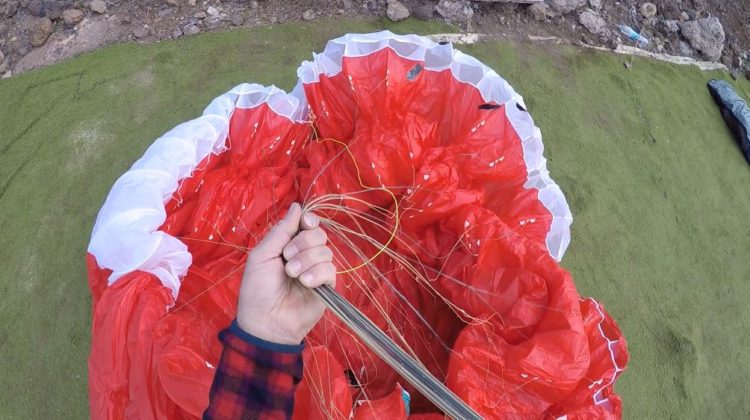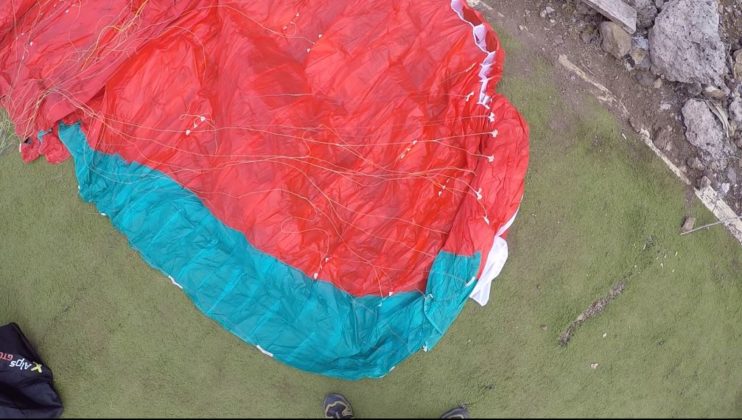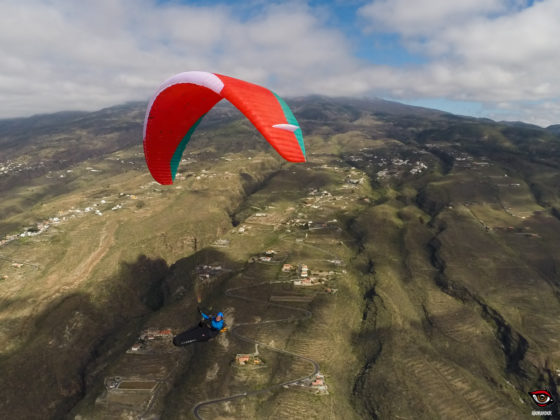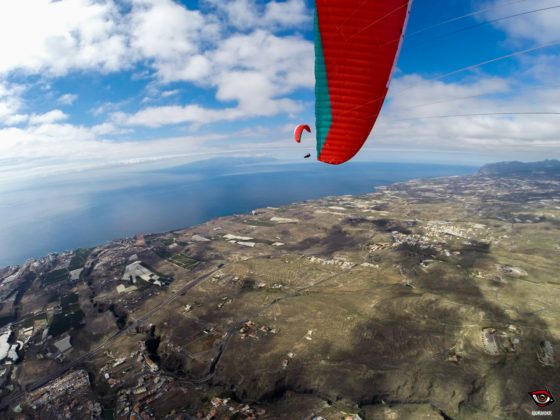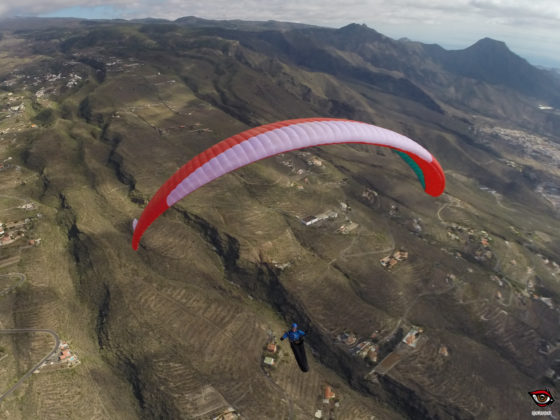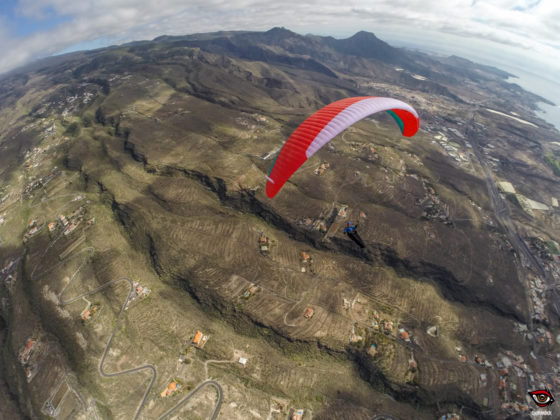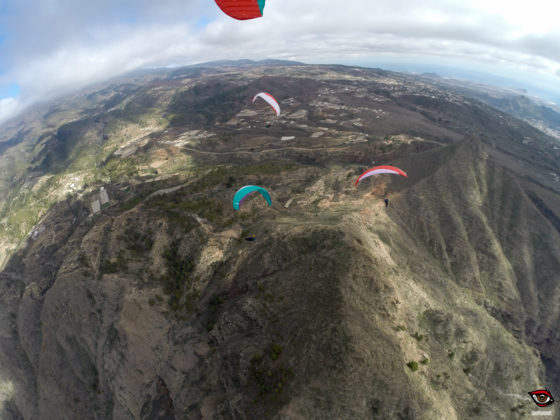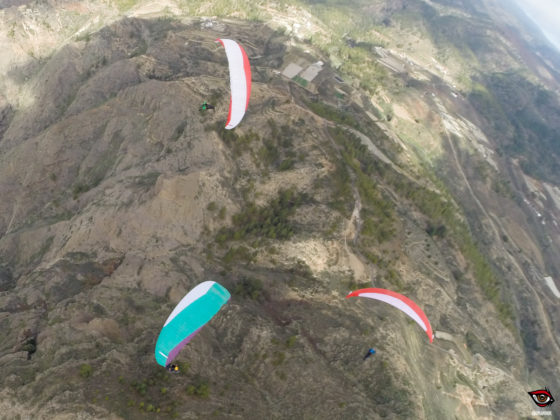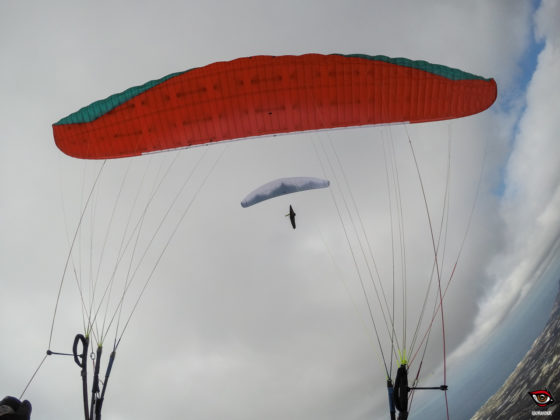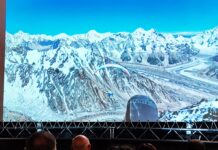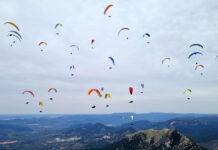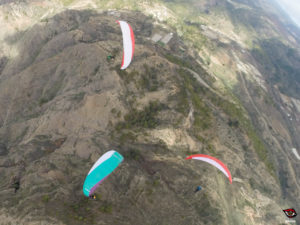
By the end of January 2017, we found the Advance team in Tenerife who came to complete the development of the tenth edition of the Sigma series, one of the most emblematic models from the Swiss manufacturer – designed for experienced and demanding pilots, with EN C approval.
We met in the air by the area of Ifonche where I was flying tandem, a Bibeta 6 also from Advance, and we shared some turns in a smooth thermal that allowed me to get some images of the first Advance Sigma 10.
After getting in touch with Kari Eisenhut (Test Manager), he invited me to fly a Sigma 10 size 29, with weight range of 105 to 130 kg. Once I had the glider in my hands I spared myseld half a day, from 11 until 15:30 hours, to do a good test flight taking off from Taucho -in the South of Tenerife.

It was a special day in Tenerife, with practically no wind and cloudbase that was progressively rising to over 1500 meters above sea level, so it would allow for a good stroll. I took off at midday, loading 122 kg, and spent three hours in the air. At the beginning, it was cloudy and there were big shades so I forced myself to fly gently and with patience. As the day progressed, the condition turned to “explosive”, so this flight gave me the opportunity to try different strengths of thermals and turbulence.
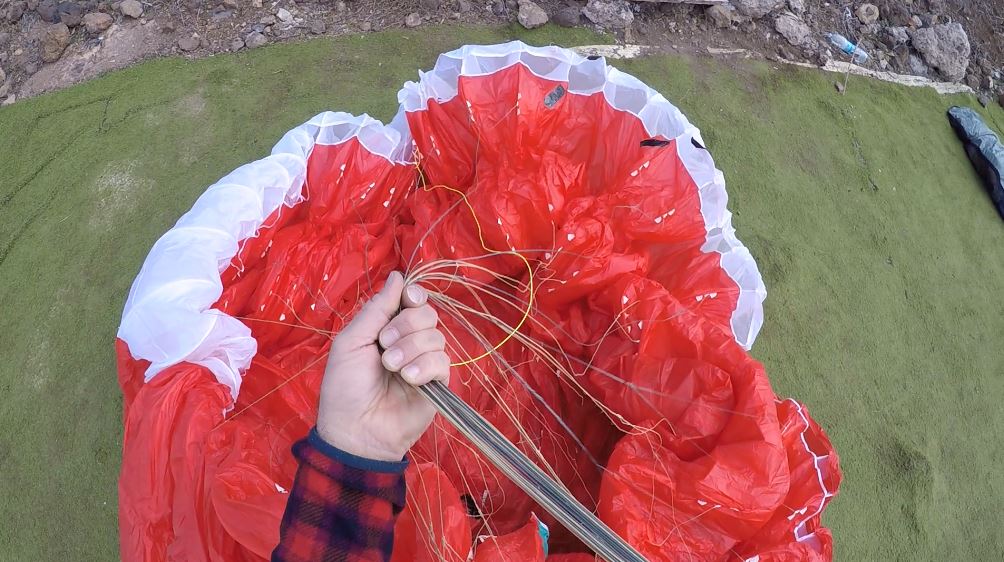
Launching
I only did one take-off from Taucho, with low breeze somewhat crossed from the West. I did a very simple preparation: inspected the wing, hooked up my gear, and took the open glider to the takeoff, where they helped me open the Sigma 10.
As there was some breeze, I inflated facing the wing- Just a touch on the A risers and a resolute step back were enough for the glider to start raising. The sail inflated slightly unevenly but climbed in a centered way, and immediately was fully inflated and symmetrical. On the head, it felt smooth and under control. Two steps down the slope, and we are flying!
Evolved handling
Softer and more balanced than the 9, the Sigma 10 shows great tension along the wingspan offering a very balanced set that works and turns as a block. The new Advance’s EN C wing has soft control that makes handling it something comfortable and relaxed. But at the same time, it is very direct, precise and effective, offering immediate harmonious response, in addition to agility without nervousness.

Between 15 and 25 cm of brake travel are enough for a normal flight. The turning behaviour of the Sigma 10 is flowing, without pausing nor losing momentum, and with full wing pressure. You can adjust the angle from flat performance turns to tight spirals. In general, we do not need to force the turns.

The pitch axis is quite contained; the Sigma 10 “bites” well and makes the task of moving against the wind very easy. It also shows great solidity; I spent time navigating hands-free in turbulent air, only steering with the body to check the stability of the glider, and confirmed that the tendency of the wing is to move forward keeping a high angle of attack, in order to not be compromised. It was impossible to have a front collapse.
Sailing at full speed
By the final part of my flight, I met up with Advance pilots on different sizes of Sigma 10s and we did some little speed races. It was fun to push the bar to the top head-to-head with this group of young people and skilled pilots, but we finally found a thermal area where Kari and I did not let go one inch and took some distance from the group. The thermal was strong and the air was bumpy, but we could still keep the speed on, only using the bar and the rear risers to control the glider.
The Sigma 10 is a 3-line paraglider. The one I test-flew had handles on the rear risers that run smoothly and add to the handling. Kari mentioned that they would not include them in the final version – but they finally did, as you can see in the products page. I think that these risers can be useful, although I found them to be a little high.
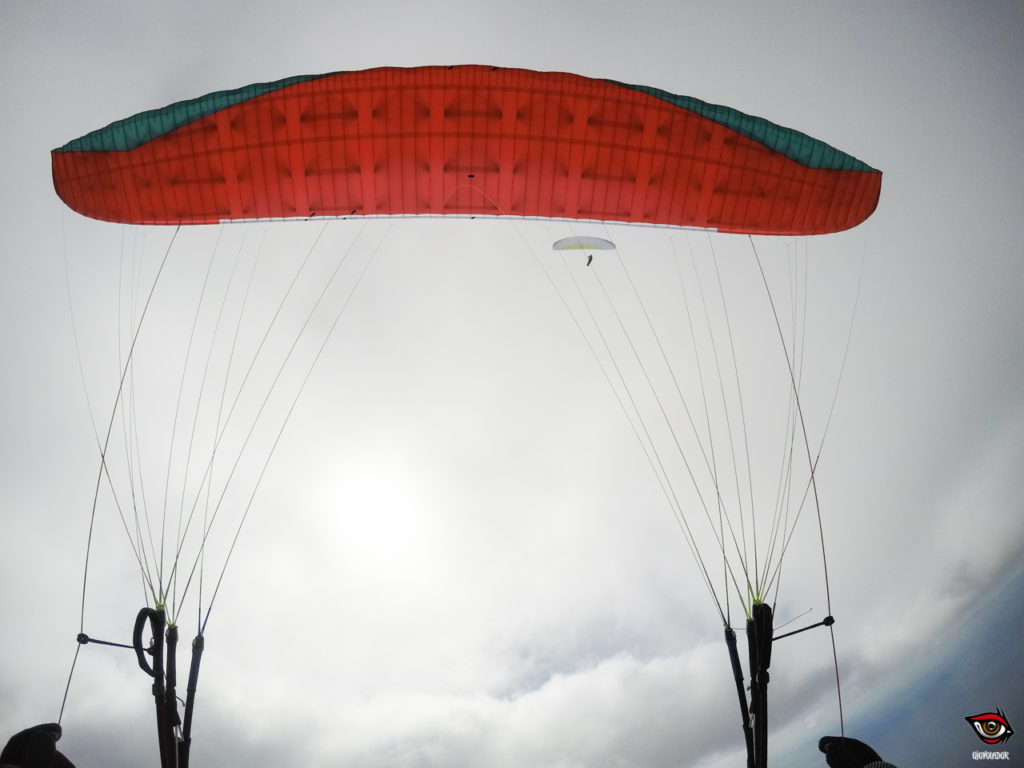
Performance
Very close to that of the Omega X-Alps, I think that the Sigma 10 comes to lead the new generation of EN C models, leaving the bar really high. This glider offers great performance but it is also easy to fly, works as a block and, thanks to its stability in pitch, it is very solid, allowing you to navigate at high speeds.
The leap from the Sigma 9 is huge. The Sigma 10 improves the handling, offers a more fluid and efficient turn, it is more stable navigating, and shows greater solidity to turbulence.
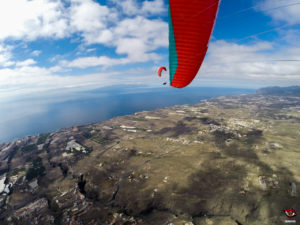
Conclusion
The Sigma 10 is pure pleasure; a very balanced paraglider that is easy to fly, with top glide ratio and superb dynamic behaviour. It is also comfortable to fly, requires little effort, and -even better- it does not cause any stress to the pilot.
This glider offers a feeling of elegance and efficiency in flight.
The final version without extra hook points and additional folding lines will surely provide a bit more of performance. ?
The Sigma 10 is one of the most interesting gliders to face the XC season, for the performance it offers, the handling, the comfort in flight, and that point of “luxury” and exclusivity that the paragliders of the Swiss manufacturer have.
+Info: Advance


